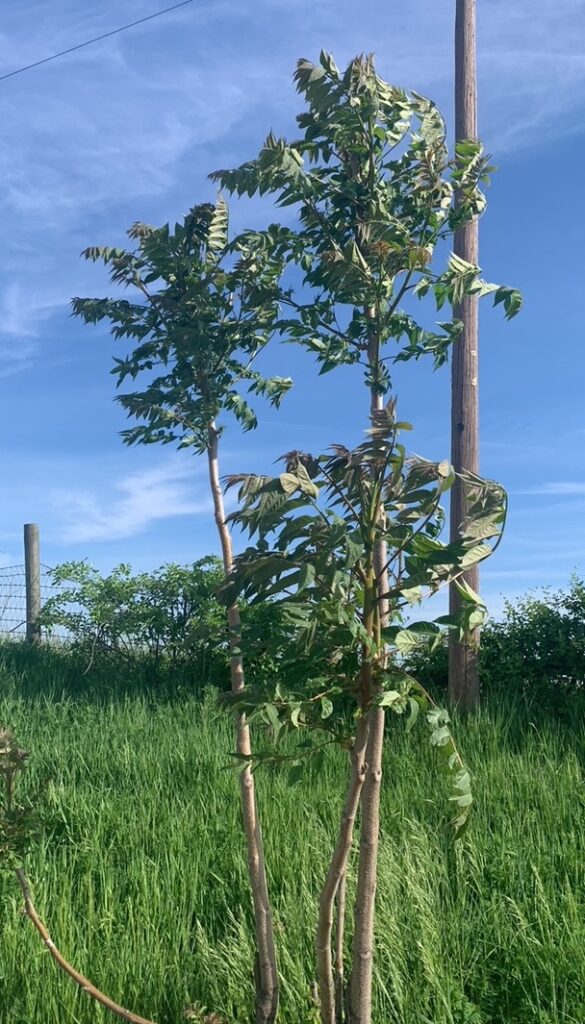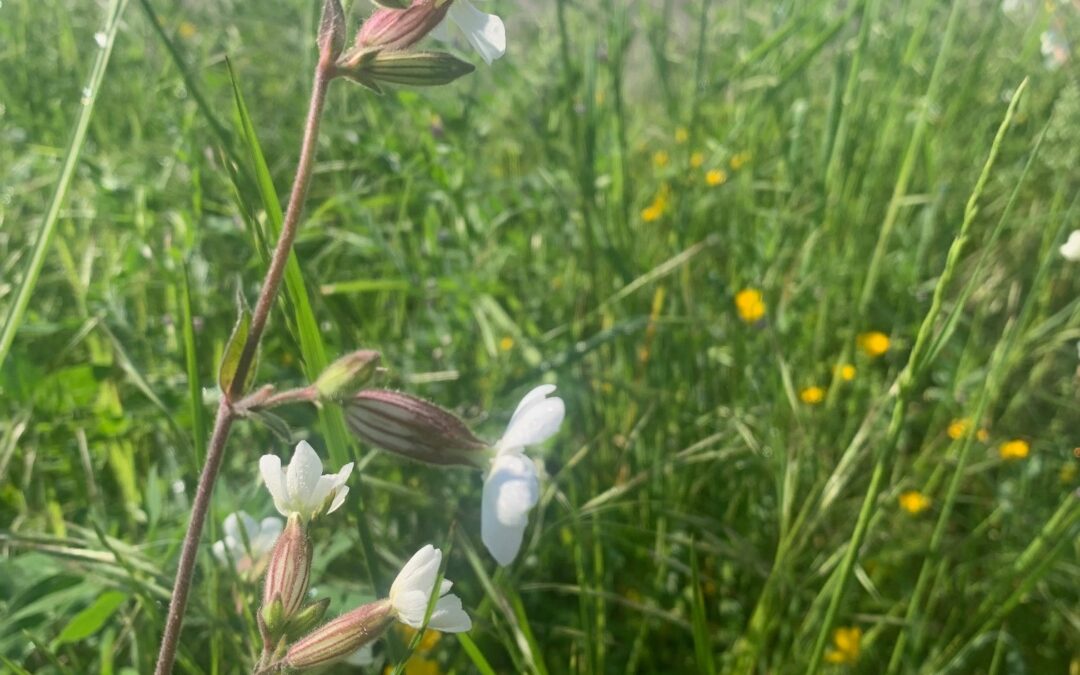This morning as I was walking with my dog through the abandoned parking lot near our house, I found a white flower that had a bladder inflated behind it. I have always called this flower a “Bouncing Betsy.” The plant identifier on my cell phone called Picture This, identified Bouncing Betsy as Bladder Campion (Silene latifolia). It said it was “native to Europe and Africa, but was naturalized throughout the United States.”
“Native” here means that a plant has lived for a long time (perhaps thousands of years) in a particular area. In this case bladder campion has lived for thousands of years in Europe and Africa. How did it get to the United States, where it is now found naturalized everywhere? Probably it arrived in multiple ways. “Naturalized” means that it spreads on its own, without a gardener’s help to many ecological areas.
Early settlers packed some of their favorite plants with them when they first travelled to the new world. Of course, they probably did not intend to bring bladder campion with them. More likely, it was a hitchhiker with their favorite apple tree. Or the seeds from bladder campion fell into a small sack with their favorite vegetable seeds. So on arrival in the new world, these seeds went into the ground with the vegetable seeds.
In some Mediterranean cultures the leaves of bladder campion are a delicacy and are used as a food product. In this case, the seeds may have been purposely packed to bring to the new world, along with other favorite vegetables. Now 300 years later, these plants have thrived and spread, so they can be found almost everywhere in the United States and Canada.
There are other native flowers in the genus Campion. They are called “catchflies,” because the stem is sticky (though they probably do not catch flies). Royal Catchfly (Silene regia) is a lovely red flower that is pollinated by hummingbirds. It is often found in prairie gardens. Their bright red color attracts butterflies and hummingbirds. This campion is a native prairie flower.

Another plant found this morning was Tree of Heaven (Ailanthus altissimo). This tree is not only not native, it is very invasive. It is called many less flattering names, such as Stink Tree, Tree of Hell and Ghetto Palm. These latter names may be more appropriate than Tree of Heaven.
This tree is invasive, because it takes over land and drives out other plants, usually native plants. This plant is very difficult to kill. And it grows very fast, moving in quickly to places that have open ground. In the abandoned parking lot it was sprouting right next to the macadam between the concrete and the grass.
Wikipedia says it is native to China and is one of the worst invasive plants in Europe and North America. This tree was imported to the United States in 1740 and by the 1800’s was used as a street tree in some American cities. There are records of its sale by nurseries as early as 1840.
While it rarely lives more than 50 years, it clones itself very fast by suckering. That means that the tree where I walk will already be sending out new suckers to start new trees, even though it is only about 7 feet tall.
It also creates an allelopathic chemical, which means that it poisons other plants. It kills almost all native forest hardwoods and conifers as its roots spread out. You may be familiar with the fact that black walnut trees also create an allelopathic chemical that kills other plants. I once lost an apple tree that was planted too close to a black walnut tree. Usually the toxic chemical is spread by the roots as they reach out into the soil.
This means that Tree of Heaven not only grows from suckers, but also kills many of the plants that it encounters as it spreads out. It is very hard to stop an invasion of this tree, and usually takes chemical spraying and physical chopping and digging to destroy it. The best thing is to uproot any plant on your property that looks like this immediately.
This tree was lauded in the book A Tree Grows in Brooklyn, because it can survive very difficult urban situations. It is tolerant of sulfur dioxide, ozone and cement dust fumes often found in city environments. It is found along 30% of our interstate highways.
Wikipedia mentions that it may be required for the life cycle of the spotted lantern fly, the invasive insect we are now trying to eradicate everywhere.
A naturalized plant is one that is not native, but that can spread all by itself. It does not necessarily cause damage in the environment, though it may show up in your garden as a “weed.” An invasive plant is a naturalized plant on steroids. It damages the environment by overpowering a native ecology system. It should be removed.


